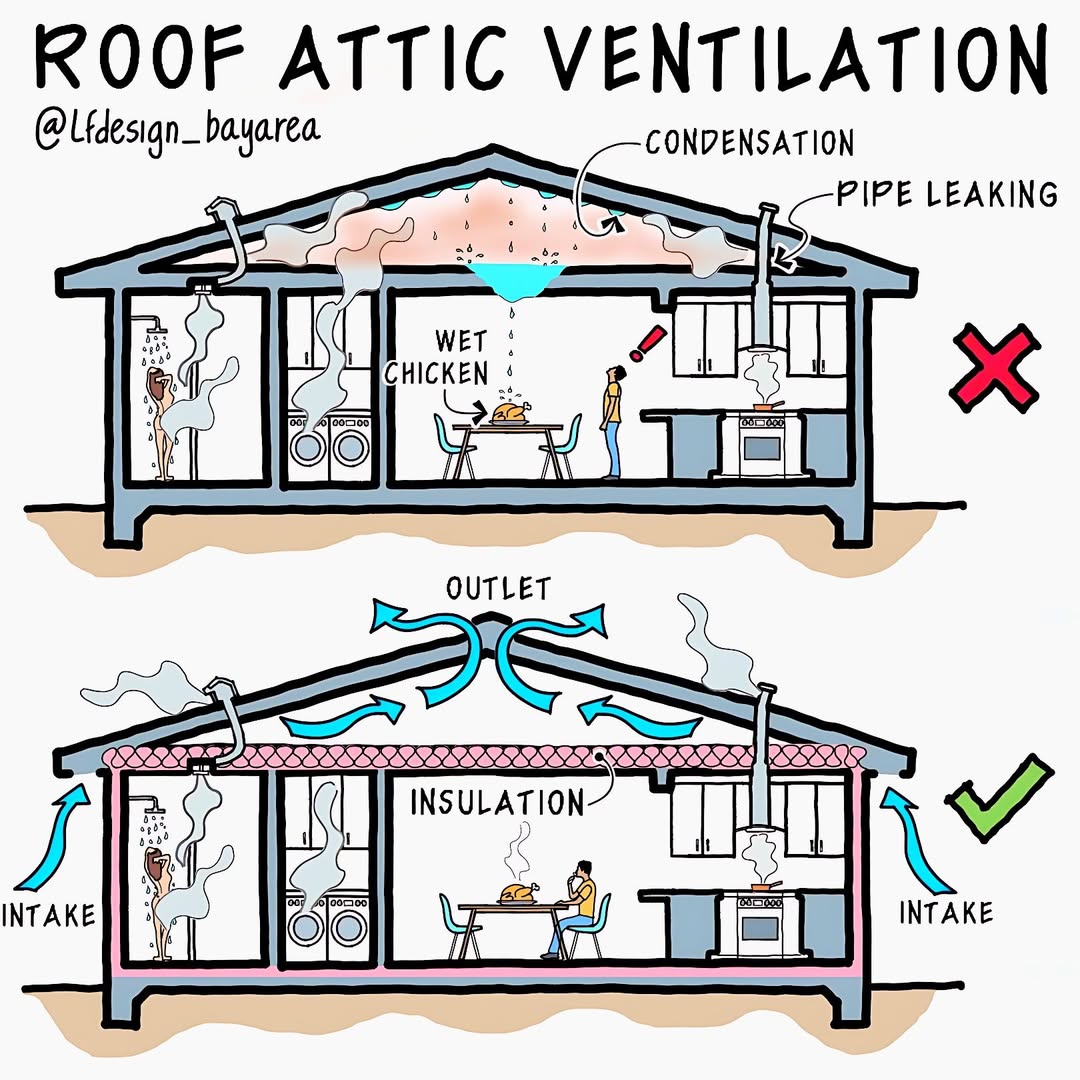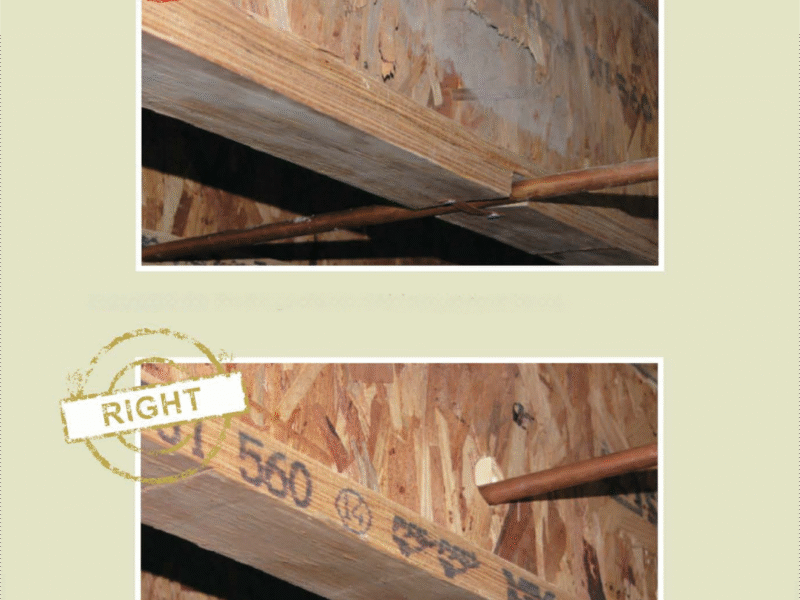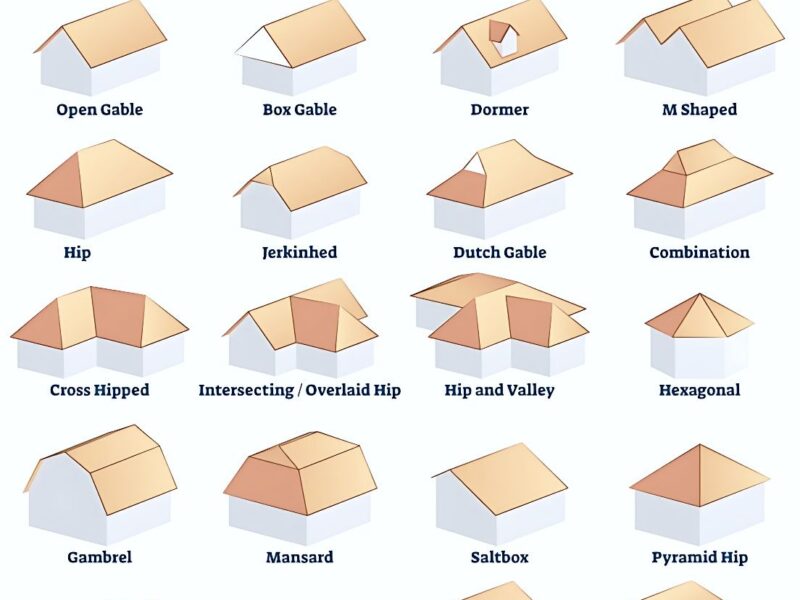Poorly Ventilated Attic (![]() )
)
This scenario depicts the problems that arise when an attic lacks adequate ventilation.
* Sources of Moisture/Heat:
* Bathroom (Left): Steam from showering is shown rising.
* Laundry Room (Middle): Steam/moisture from washing machines/dryers is shown rising.
* Dining/Living Area (Middle): Steam from cooking (“WET CHICKEN”) and general human activity is shown rising.
* Kitchen (Right): Steam/smoke from cooking (e.g., stovetop, oven) and a “PIPE LEAKING” (from an exhaust vent or plumbing stack) further contribute moisture.
* Problem in the Attic:
* High Humidity/Heat: All the rising moisture and heat from the living spaces, combined with heat gain from the sun on the roof, get trapped in the unventilated attic.
* Condensation: The trapped warm, moist air comes into contact with the cooler underside of the roof sheathing, leading to condensation (represented by the water droplets and pool in the attic).
* Consequences of Condensation:
* Mold and Mildew: The wet conditions promote the growth of mold and mildew on wood framing and insulation.
* Wood Rot: Prolonged moisture can lead to rot in the roof decking and structural members, compromising the roof’s integrity.
* Damaged Insulation: Wet insulation loses its effectiveness, leading to higher energy bills as heat escapes in winter or enters in summer.
* Ice Dams (in cold climates): In winter, uneven roof temperatures due to trapped heat can melt snow, which then refreezes at the colder eaves, forming ice dams that can damage gutters and force water under shingles.
Properly Ventilated Attic (![]() )
)
This scenario demonstrates how an effective attic ventilation system prevents the issues seen above.
* Insulation: The diagram clearly shows a pink layer labeled “INSULATION” on the attic floor (above the ceiling joists). This is crucial for separating the conditioned living space from the unconditioned attic.
* Airflow (Blue Arrows):
* INTAKE: Blue arrows show cool, fresh air entering the attic through vents located at the eaves (soffit vents).
* OUTLET: Blue arrows show warm, moist air exiting the attic through vents located at the ridge (ridge vents or static vents).
* Mechanism: This continuous flow of air (convection) through the attic space achieves several goals:
* Removes Heat: Prevents heat buildup in summer, reducing the load on the air conditioning system and extending the life of the roof materials.
* Removes Moisture: Carries away any moisture vapor that migrates into the attic from the living space, preventing condensation.
* Maintains Dry Insulation: Keeps the insulation dry, ensuring it performs optimally year-round.
* Prevents Ice Dams: In winter, a cold attic (due to good ventilation and insulation) prevents snow on the roof from melting prematurely, thus preventing ice dam formation.


